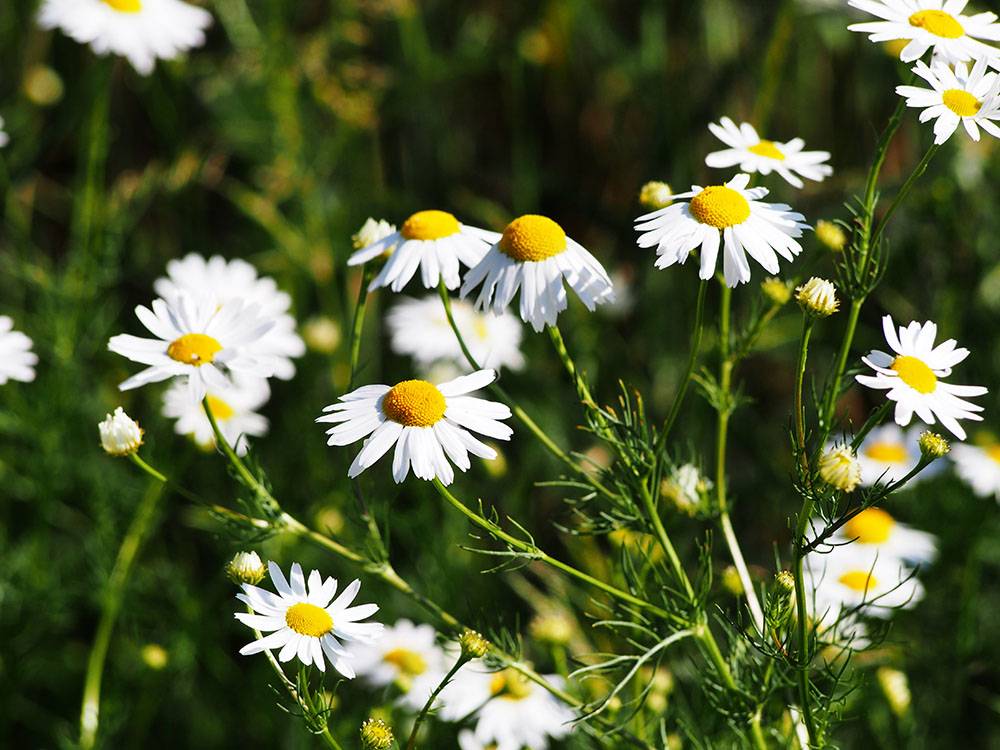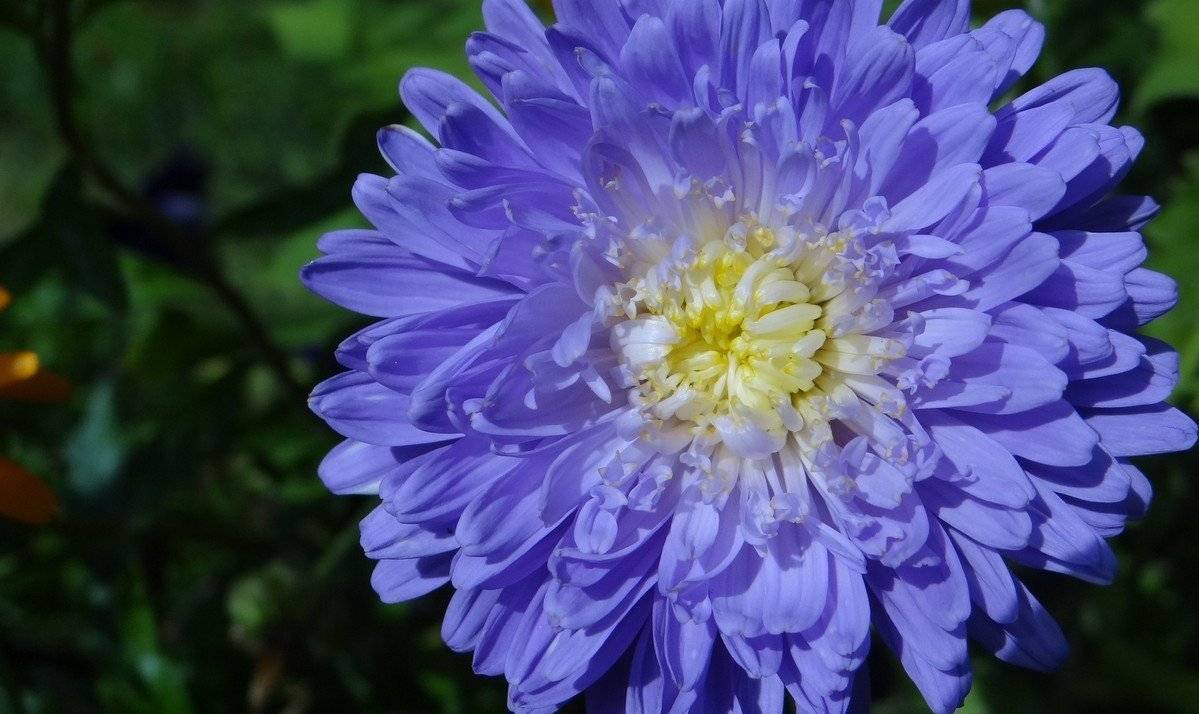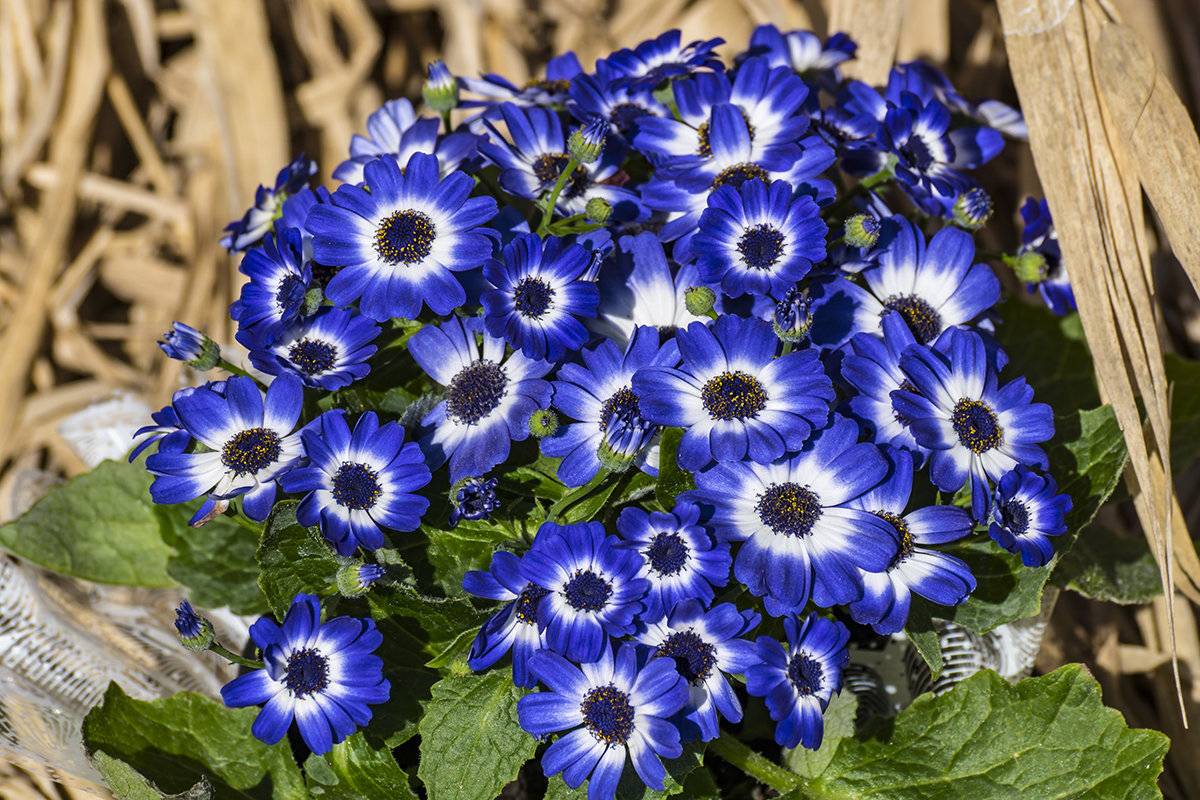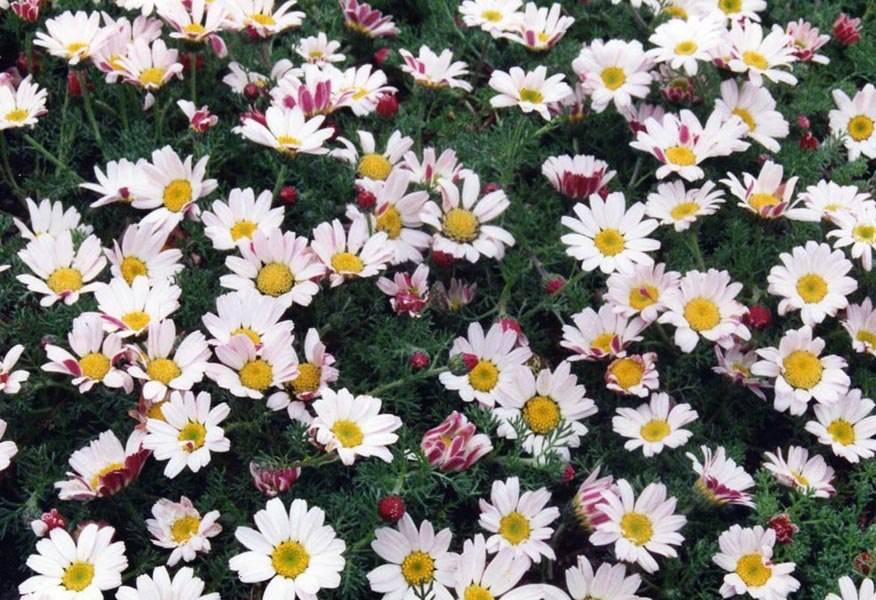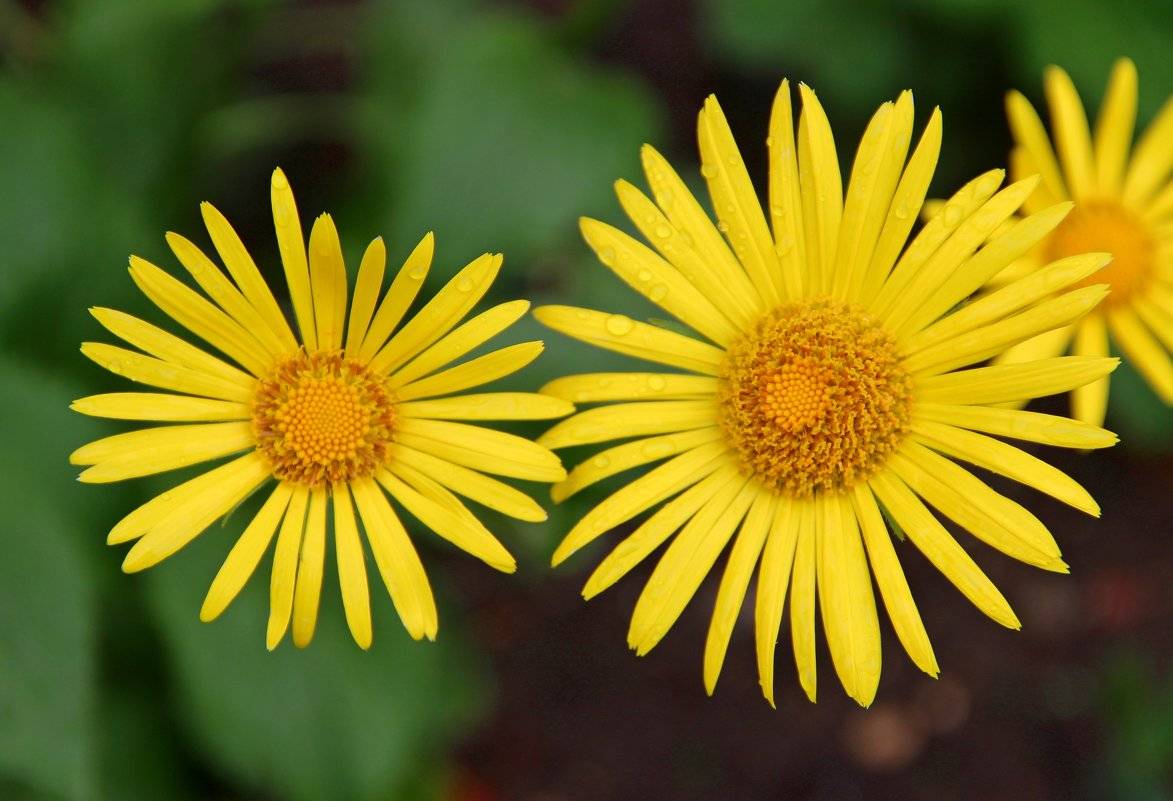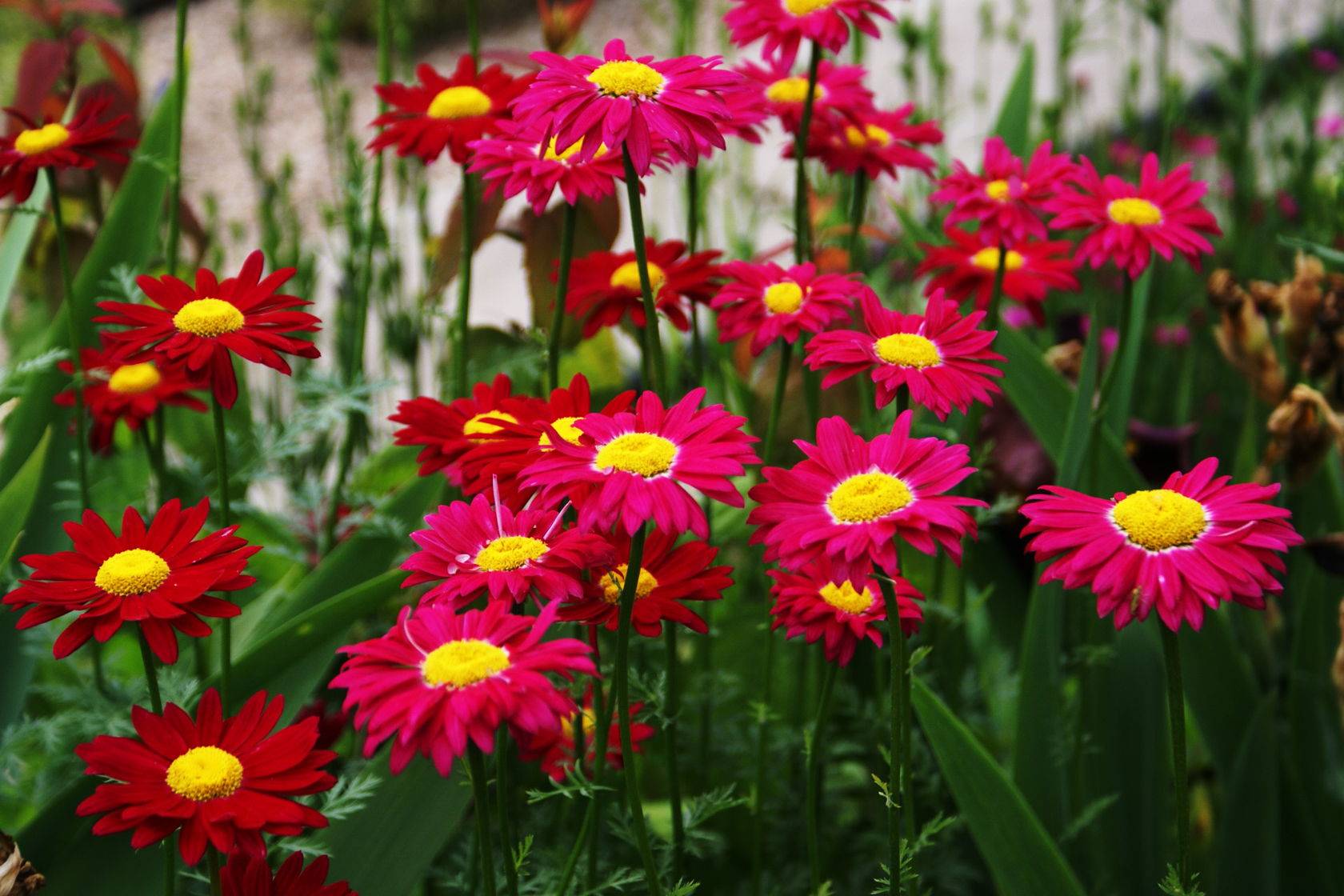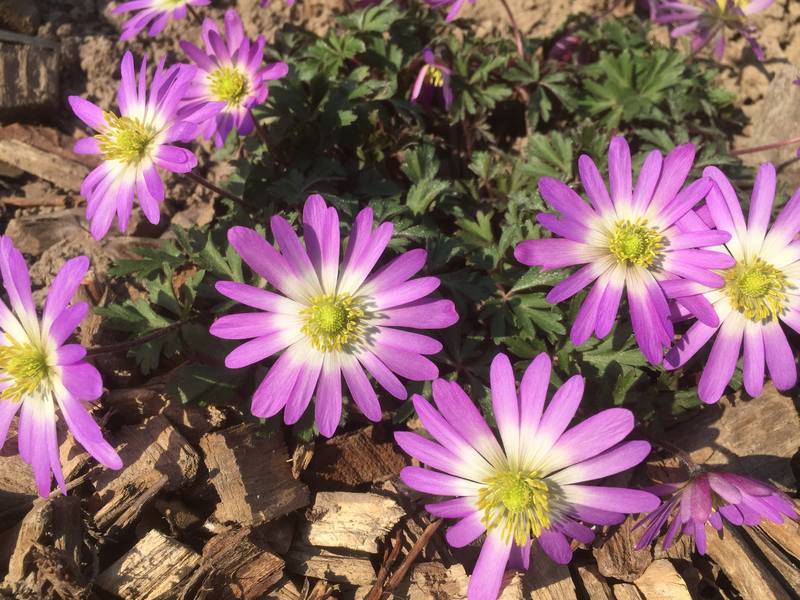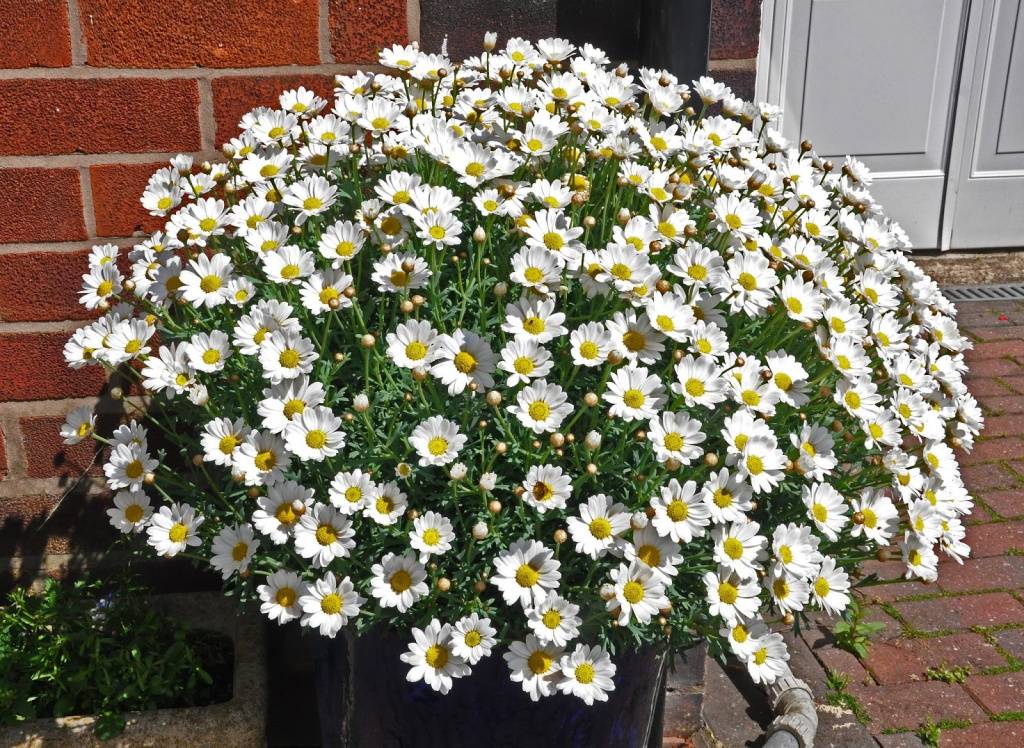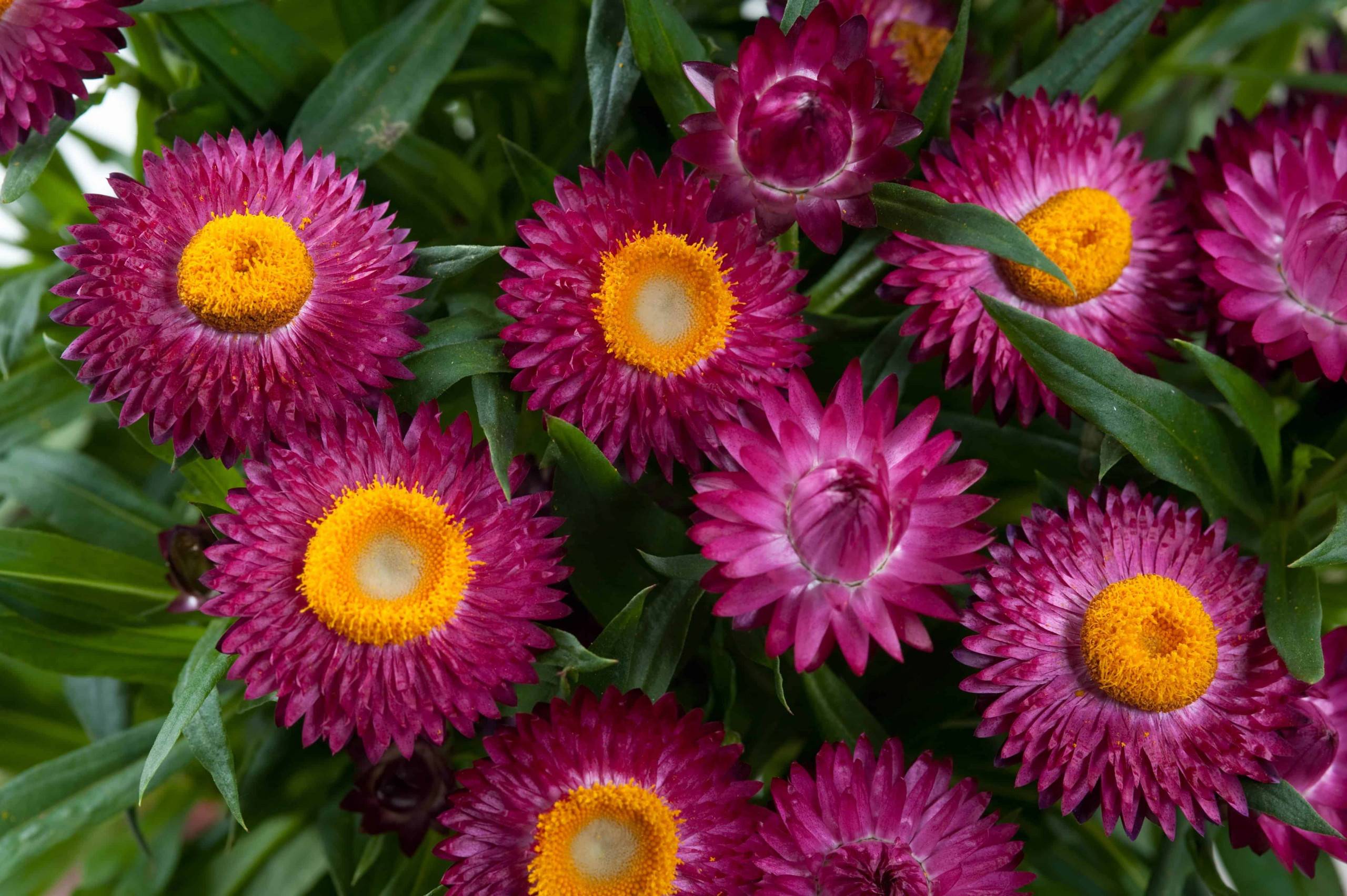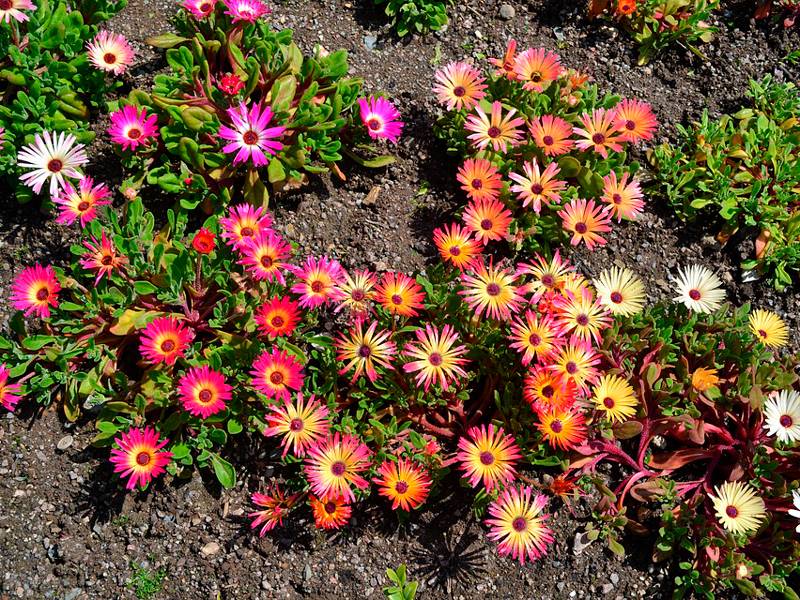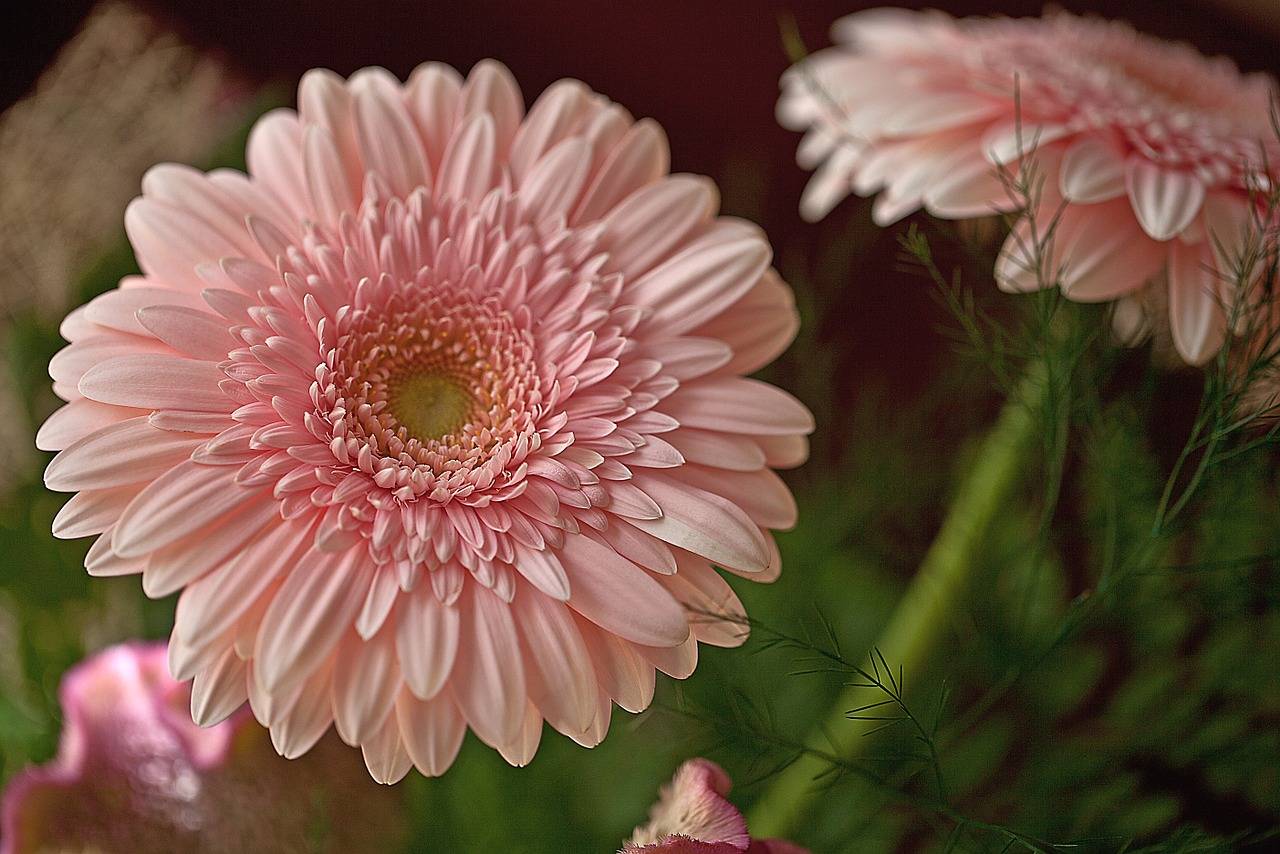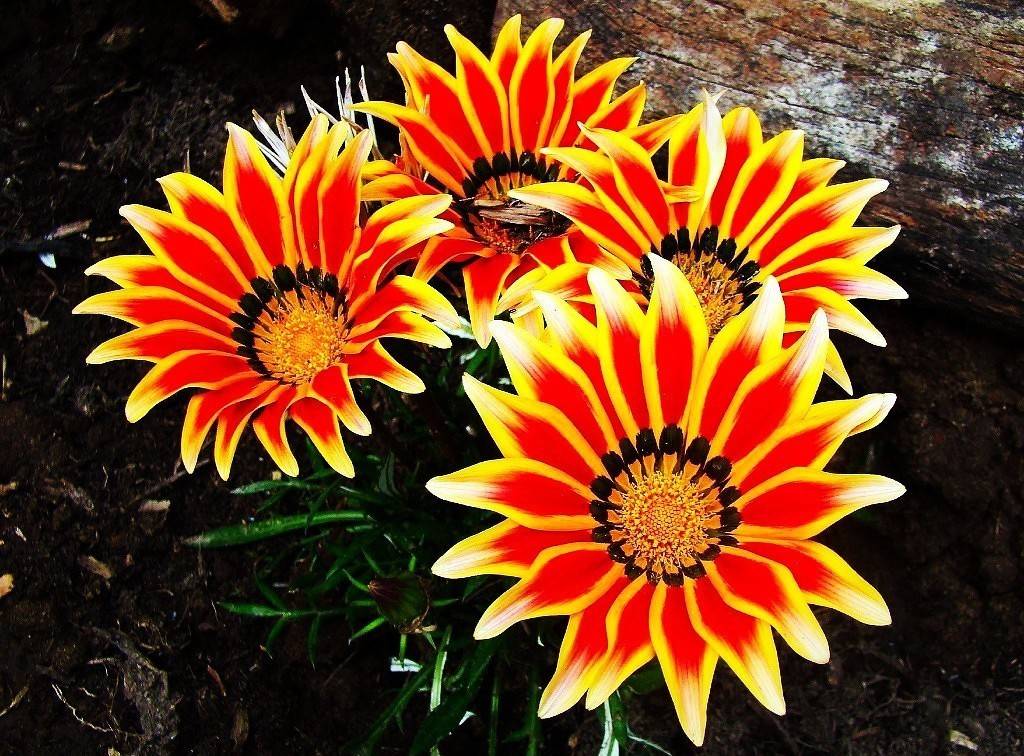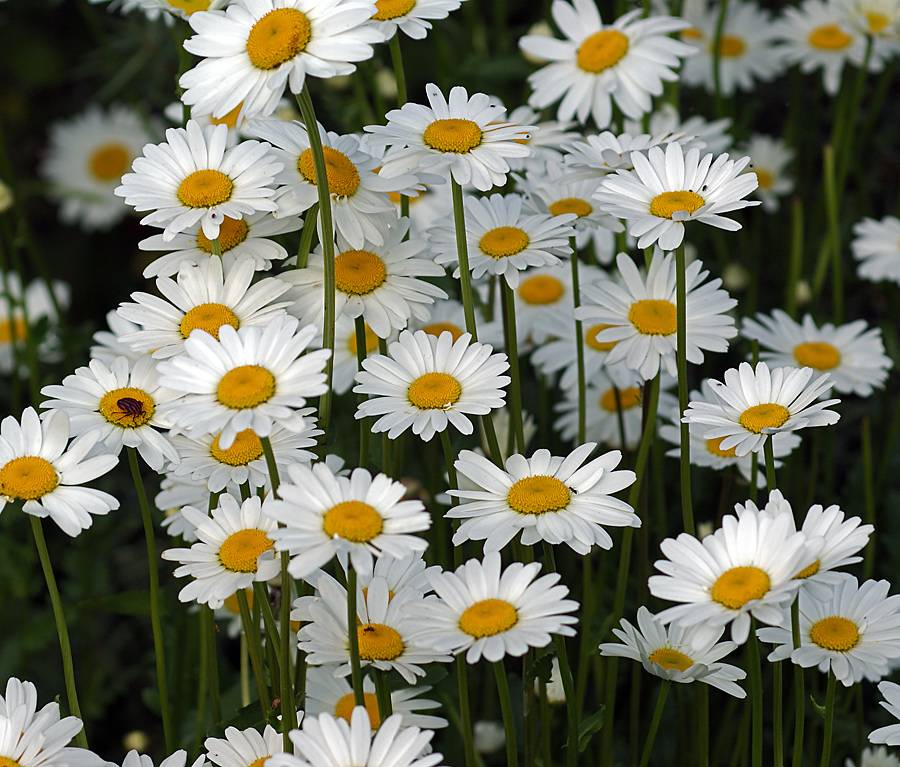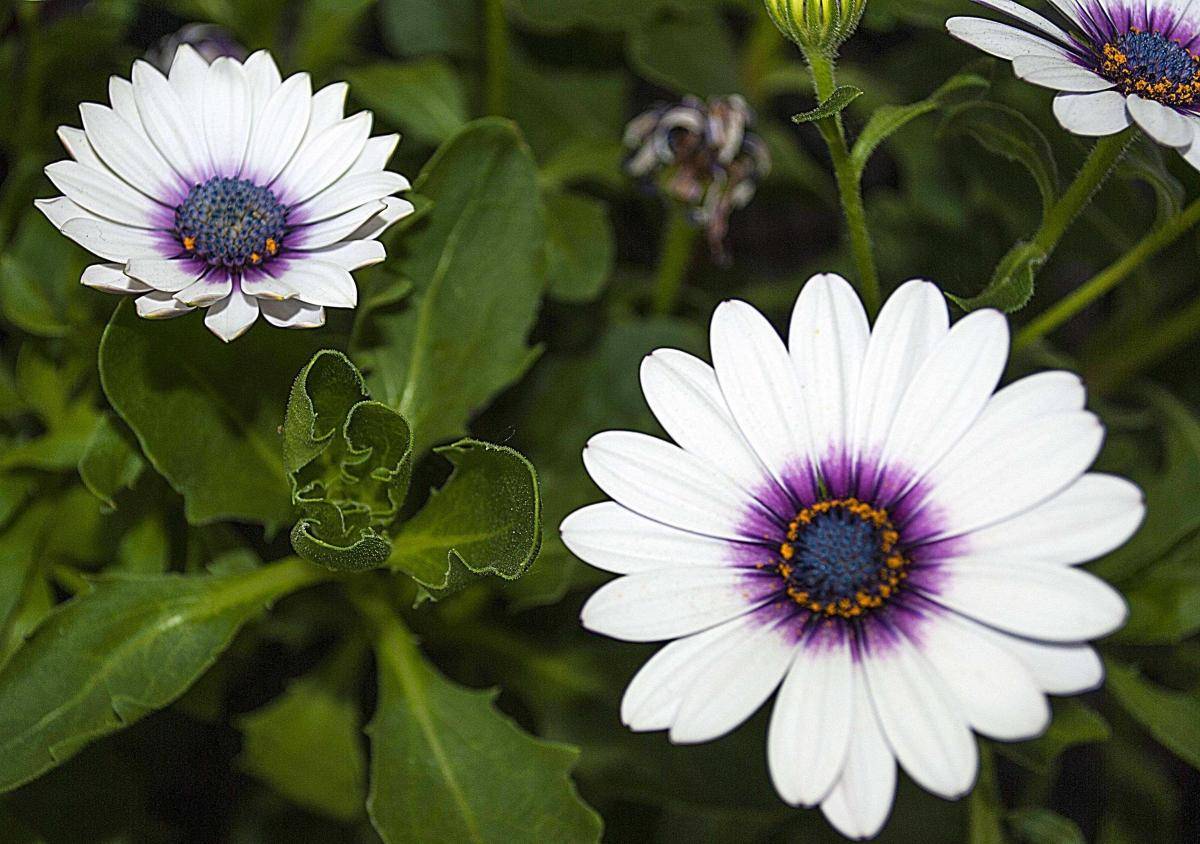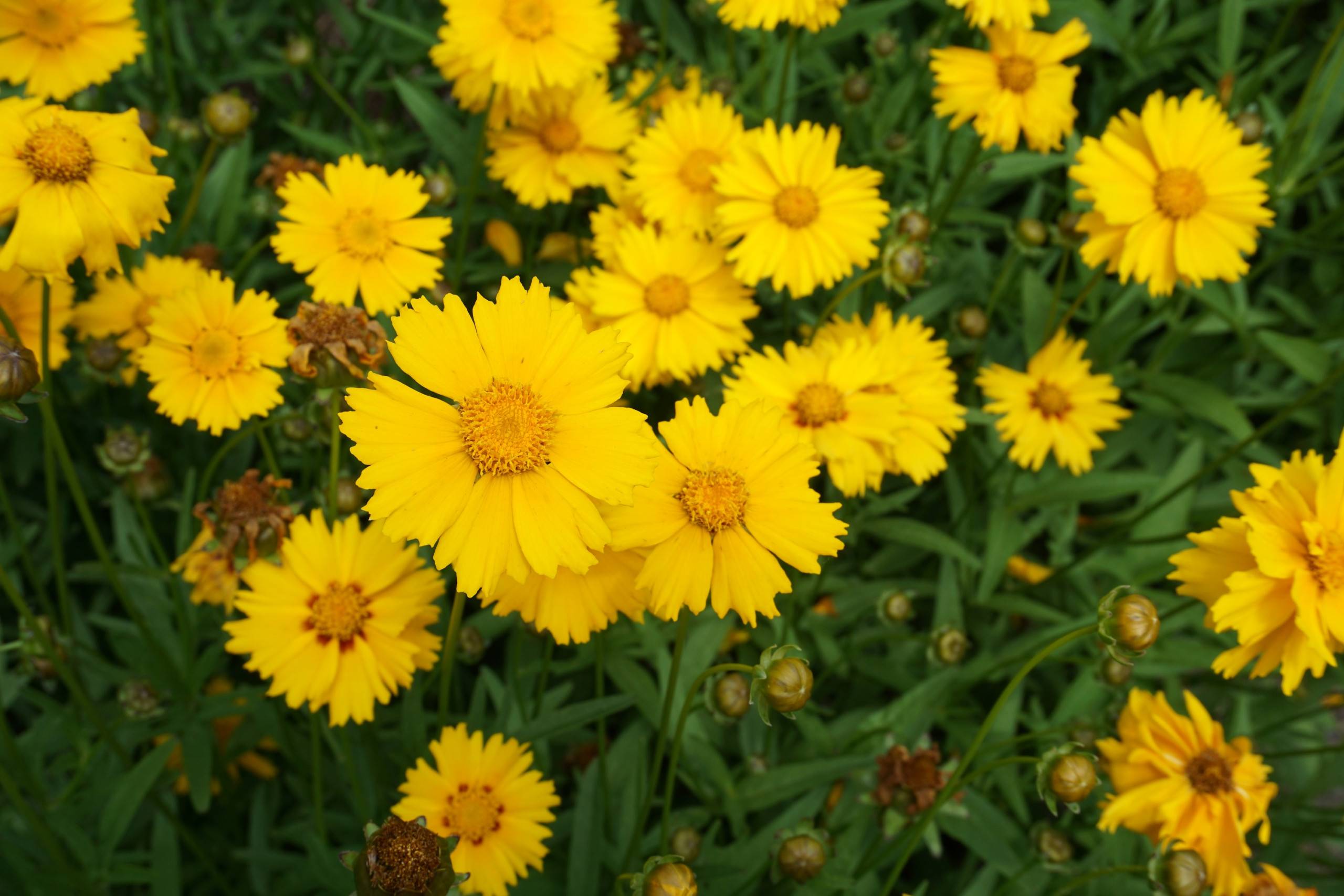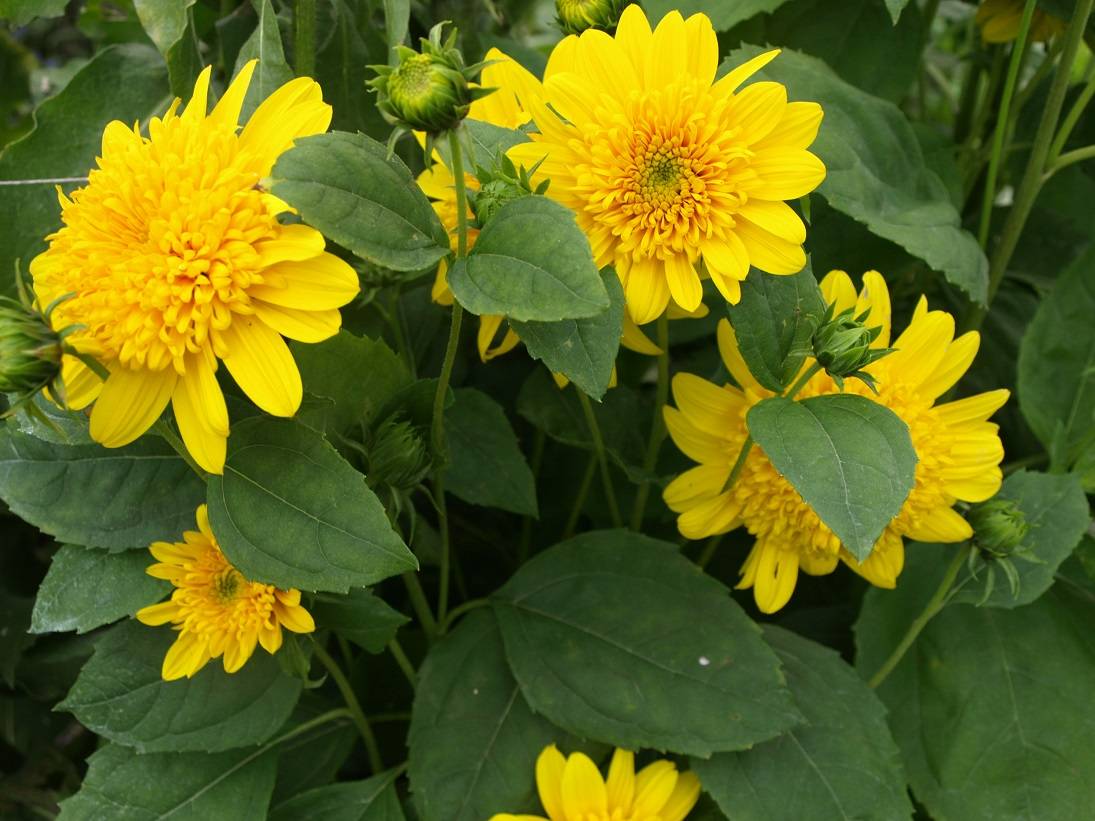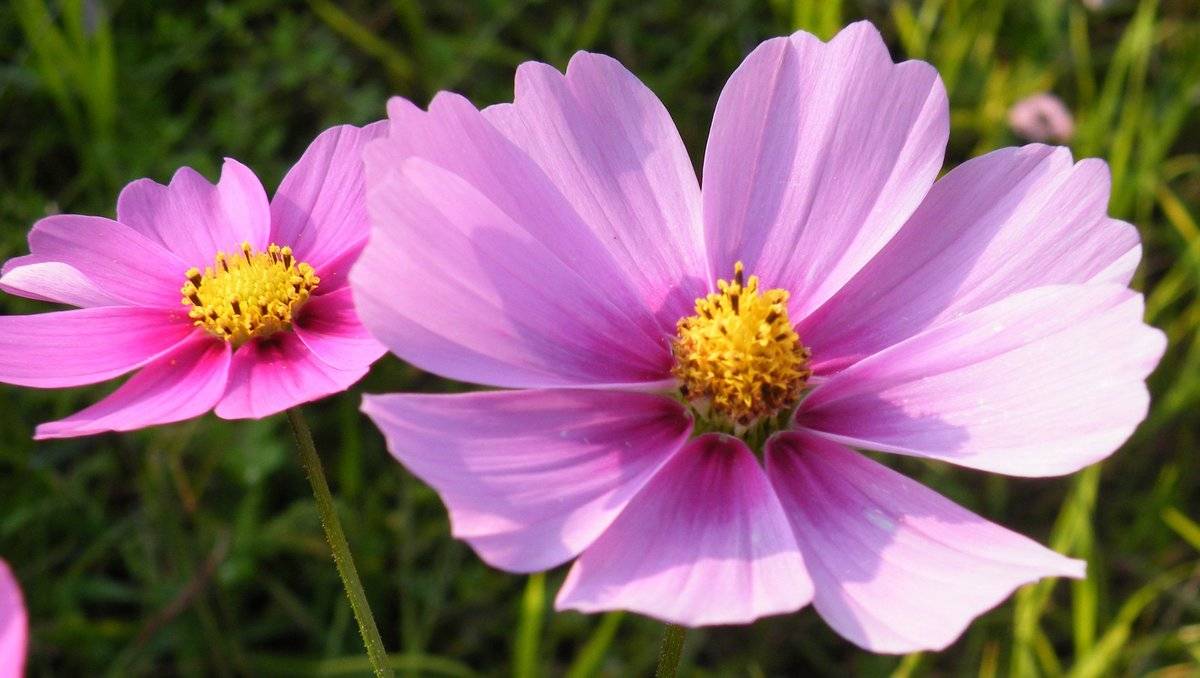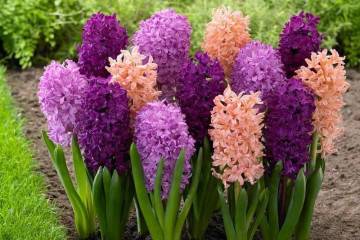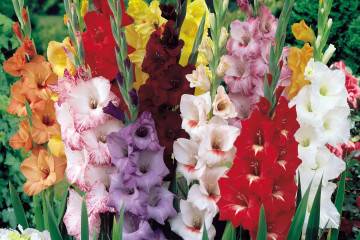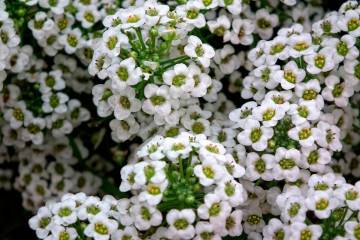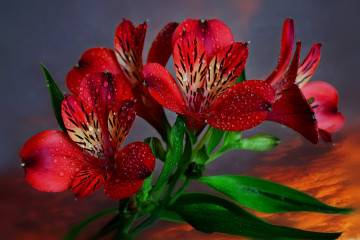What are the names of the flowers that look like chamomile.
Content:
Chamomile is a well-known and beloved flower by many. Almost every person living in central Russia met with him. Chamomile is easy to recognize by its snow-white petals and bright yellow center.
A brief description of chamomile
Chamomile is a botanical genus that belongs to the vast family Asteraceae, or Asteraceae, of the dicotyledonous class. The family unites more than 32 thousand species. Flowers similar to daisies can be seen in other members of the family. It includes such genera as aster, doronicum, gerbera, pyrethrum, osteospermum, umbilical, three-ribbed, chrysanthemum, nivyannik.
A distinctive feature of the representatives of the Aster family is the inflorescence. This type is called a "basket", formed by a flat, convex or concave receptacle, on which the petals sit tightly. Inflorescence pattern: the receptacle is often surrounded by a wrapper and a calyx formed by one or more rows of bracts. In the case of chamomile, which is familiar to us, small tubular flowers with five stamens form a yellow center, and the common calyx forms the white petals of the outermost reed flowers.
All flowers, like chamomile, have a specific inflorescence appearance with small flowers in the center, forming a "middle", and brightly colored petals along the edge.
Blue daisies
Blue flowers, which resemble chamomiles, are representatives of the genera aster, cineraria, osteospermum.
Aster
A garden flower loved by many. Gardeners are attracted by its unpretentiousness, simple agricultural technology, and a rich palette of inflorescences. Currently, there are over 600 hybrids and varieties of these flowers. Another name for asters is callistephus. China is considered his homeland. In Europe, the flower appeared in the 18th century.
Aster features:
- stem height up to 50 cm;
- surface tap root system;
- inflorescence - basket.
Sowing seeds for seedlings - until June 10. From emergence to flowering, 80-130 days pass, these figures should be relied on when planting seedlings in open ground. Depending on when you want to see the first flowers, determine the time for planting the seedlings.
According to the lifespan, asters are one-year, two-year, perennial. The main types of aster inflorescences are 12. The simplest inflorescences of Zonenshine, Margarita, Edelweiss are most similar to chamomile. They have a middle and large petals along the edge.
Aster varieties similar to blue daisies:
- alpine blue aster;
- Baroness blue and white;
- Excellent Ruckley;
- aster heather Blue Parade.
Cineraria
The genus cineraria consists of 50 species. Translated from Latin, the name means "ashen". These flowers come from Madagascar. Cineraria is cultivated as an annual or biennial.
The height of bushes with strongly pubescent, pinnately dissected leaves is from 30 to 90 cm. Flowering from mid-June, until the onset of frost. The inflorescence is a chamomile-like basket with a dark or yellow center and bright envelope petals.
Seeds for seedlings are sown in early April, in open ground - in mid-May. Used as borders, mixboards, in flowerpots and flower beds.
Varieties and hybrids bloom with blue "daisies":
- Star Wars Blue Shades;
- Venice Blue Vis Ring;
- Venice Blue;
- Venice Delft Blue Vis Ring;
- Jester Blue Bicolor.
Osteospermum
A beautifully flowering herb. The homeland of the flower is South Africa, Somalia, the Arabian Peninsula, which is why it was named African chamomile. Osteospermum is sometimes referred to as Cape daisy or blue-eyed daisy.
The plant has the shape of a bush up to 1 meter tall. Blooms from early June until the onset of cold weather. The diameter of the inflorescences is 2.5-7.5 cm, they are open only when the sun is shining.
Varieties with blue petals:
- Sky and ice;
- Starry ice.
Cape chamomile is used in borders, mixed flower beds, mixboards, specimen plantings.
White flowers that look like daisies
There are a great many genera and species of Compositae, similar in shape to a chamomile. Below we will consider a genus that is similar in shape and color.
Anacyclus
It is also called Spanish chamomile or saliva. Homeland - the Mediterranean coast in Europe, Asia, Africa. There are 6 varieties in the culture. Used in alpine slides and flower beds. There are annual and perennial varieties. The flower loves the sun, well-drained soil.
Varieties with white petals:
- anacyclus Garden gnome;
- the anacyclus is compressed;
- anacyclus medicinal;
- anacyclus clavate;
- anacyclus Ofitsinarum.
Orange daisies
Flowers with orange daisies, similar to suns, will decorate any flower bed and bouquet.
Doronicum (goat)
This genus includes up to 70 species. Doronicum is a mountain dweller. In the mountainous regions of Eurasia, it is found at an altitude of up to 3.5 km. In culture, the goat is known since the 16th century. The herbaceous perennial plant forms shrubs covered with bright flowers with yellow petals and a center.
The landing recipe is simple: they are sown for seedlings in early April, transferred to open ground in early June. Light-loving plant, tolerates slight shading. Usually there are two waves of flowering per season: in early summer and in the second half of it.
Popular species and varieties:
- doronicum Austrian;
- doronicum Altai;
- eastern doronicum
- grade Gold Dwarf;
- Spring Beauty variety;
- grade Little Leo.
- Doronicum Columns;
- doronicum Clusa;
- doronicum plantain
- Excelsium cultivar
- Miss Mason grade;
- doronicum oblong-leaved;
- doronicum Turkestan.
Used in alpine slides and as a free-standing plant.
Pink daisies
Pink daisies are delicate and attractive. Let's consider some of the varieties.
Pyrethrum
The homeland of the pyrethrum species is Europe, Asia and North America. Many representatives have antipyretic and anti-inflammatory properties. Most of the species are perennials. Height of stems up to 1 meter, powerful root system. The diameter of the baskets of pyrethrum can reach 60 cm.The peak flowering of these colored daisies occurs in May-June.
Pyrethrum seeds are sown on seedlings in early March, planting on the site is carried out in early June. These flowers are used in group plantings, as tapeworms, for cutting.
Varieties with pink petals:
- pyrethrum red or Caucasian chamomile;
- pyrethrum pink or persian chamomile.
Small daisies
There are a lot of plant species with small multi-colored daisies. The most common in flower beds are Bland's anemone, argirantemum, gelichrisum, mesembriantemum.
Anemone Blanda
Chamomile-like primrose from the buttercup family. Another name is tender anemone. In the Russian Federation, the wild anemone is listed in the Red Book.
Features of the plant:
- tuberous rhizome;
- bushes from 7 to 25 cm high;
- leaves are dark green, dissected;
- single chamomile flowers;
- petals of blue, lilac, white flowers;
- the diameter of the flowers is 5-10 cm.
Anemone is a perennial that blooms for 3-4 weeks in April-May. Used on flower beds, alpine slides, borders. It goes well with other primroses: daffodils, primroses, muscari will become excellent neighbors for anemones.The flower is unpretentious, feels good both in the sun and in partial shade.
Argiranthemum
Another name is daisy chrysanthemum. A profusely flowering shrub, its homeland is the Canary Islands. Blooms from July to October with a large number of small daisies. The color of the petals is white, burgundy, blue, yellow.
Cultivated species of Argirantemum:
- shrub argiranthemum;
- argiranthemum adauctum;
- argiranthemum broussonetii;
- argiranthemum callichrysum.
Argirantemum is a finicky plant, it is difficult to create ideal conditions for it. The old parts of the shoots are lignified, the bush can reach a height of 80 cm. It can be perennial if it is moved indoors for the winter.
Gelikhrizum daisy-flowered
Gardeners call gelikhrizum immortelle or tsmin. His homeland is South Africa and the Australian continent. In the middle lane, these unpretentious plants bloom until the first frost. The peculiarity of gelichrizum is that in cut it can stand up to a year, retaining the bright color of the petals.
Appearance:
- ribbed stem up to 120 cm high;
- leaves are narrow, dark green, pubescent;
- basket diameter up to 7 cm;
- the petals are dry, bent inside the inflorescences.
Gardeners grow about 30 species of immortelle. Most Popular:
- bracts immortelle;
- coral gelikhrizum;
- cmin milf-like;
- daisy-flowered gelichrizum;
- sandy cmin;
- narrow-leaved immortelle;
- Helichrizum Selago.
Immortelle seeds for growing seedlings are sown in late March. The seedlings are transferred to the flowerbed at the end of May. The first flowers appear in mid-July. In landscape design, gelichrizum is used for the background of mixboards, in rockeries together with lobelia, escholzia and stonecrops.
Mesembriantemum
One-year or two-year-old succulent from the Aziz family. Most often these are low, creeping or creeping plants no more than 15 cm high. Fleshy sessile leaves of a fusiform or rounded shape. The flowers of the mesembranteum are similar to colored daisies with white, pink, red petals.
Grown through seedlings, planted in open ground in late May and early June. The flower does not like waterlogging.
Types and varieties used by flower growers:
- crystal mesembriantemum:
- Sparkle grade;
- Harlequin variety;
- Limpopo variety;
- cereal mesembriantemum;
- daisy mesembriantemum;
- cloudy mesembriantemum;
- ocellular mesembriantemum.
In landscape design, it is most often used as a ground cover plant.
Large daisies
Chamomiles with baskets up to 15 cm in diameter look spectacular both on a flower bed and in a bouquet. What are the big daisies called?
Gerbera
Herbaceous perennial plant. Often used in bouquets. Can be grown on site and at home. Gerbera native to tropical Asia, South Africa and Madagascar. Occasionally it is called the transvaal daisy.
Gerbera flower stalks are up to 60 cm high. The rosette of leaves is low, located near the ground. Leaves are smooth, leathery, dark green.
Gerbera blooms from August to November. The petals are painted in a variety of colors and shades: from white to maroon, collected in a double or triple row along the edge of the basket.
There are a lot of types and varieties of gerbera, most often you can find:
- Gerbera Jameson;
- green-leaved gerbera (ordinary);
- gerbera hybrid:
- variety Festival;
- grade Alkor;
- Jupiter variety;
- grade Mars.
Transvaal chamomile propagates by seeds, dividing a bush, cuttings. Used in curbs, mixed flower beds, as a tapeworm. Gerberas are also grown as house flowers.
African chamomile, or gatsania
The genus gatsania includes about 40 species of herbaceous plants. In Europe, the flower appeared in the 17th century and was called "midday gold", as it opened at noon.
Gatsania is an annual or perennial plant, about 30 cm high. Dark green root leaves form a ground rosette. The diameter of the inflorescences can reach 9 cm.The petals are painted in a variety of colors and their combinations. Gatsaniya is grown through seedlings. Seeds are sown in the second half of March, and planted under the open sky in late May and early June. Gatsania blooms from June to October. Each flower lives up to 20 days.
Types and varieties:
- long rifle gating;
- gating harsh, or shiny;
- gatsaniya Pottsi;
- peacock gatsiya.
Landscaft designers use gating for mixboards and flower beds.
Nivyanik or popovnik
It is the daisy that is most often called chamomile, but this is a separate genus of the Compositae family. Eurasian tree or popovnik is a herbaceous perennial plant up to 70 cm high. The stem is straight, almost does not branch. Basal rosette of simple leaves.
The plant is unpretentious, caring for it is not difficult and is available even to a novice florist.
Breeders have created many interesting varieties of the daisy:
- Maxima Kenig;
- May Queen;
- Alaska;
- Bethoven
- Nivyanik Luna;
- Winner;
- Bridal veil;
- Fiona Coghill.
Differences between daisy and chamomile
Why are daisies and chamomile often confused? Let's compare these plants.
| Sign | Nivyanik | Chamomile |
| Basket size | up to 12 cm | up to 6 cm |
| Sheet | Dense, rigid, solid, with a scalloped edge. | Cirro-dissected |
| Stem | Single, carries one basket | Branched, bears many inflorescences |
| Smell | Light "chamomile" aroma | Without smell |
Nivyanik is used in solitary, mixed plantings in flower beds, along the walls.
Echinacea or large chamomile
Echinacea is an unpretentious and bright flower, an excellent honey plant and decoration of any flower bed. It blooms from mid-July to mid-September. Echinacea plant is unpretentious, prefers sunny places. Propagated by seedlings or buy an adult plant in garden centers.
American chamomile
Echinacea is also called American chamomile, as it comes from North America. The genus Echinacea unites 9 species, most often flower growers prefer Echinacea strange and Echinacea purple, as the most decorative.
Varieties:
- Cranberry Cupcake;
- The King;
- White Swan;
- Indiaca;
- Magnus.
Echinacea is very fond of visiting butterflies, in addition, it is used in folk medicine as an immunomodulator.
Terry calendula
The homeland of calendula is the Mediterranean. It began to be cultivated by humans for its medicinal properties. Calendula heals wounds, improves digestion, and has antiseptic properties.
In warm climates, calendula is a perennial. We have an annual plant in the middle lane. It is a herbaceous plant with a maximum height of 80 cm. The leaves are heavily pubescent. Branches profusely, with several inflorescences-baskets on each stem. Coloring of petals from light yellow to brick-orange.
The plant is unpretentious, resistant to cold, easy to care for. Propagated by self-sowing, keeping varietal characteristics. The difference between terry calendula is a large number of reed flowers in the inflorescence. This makes it look like an aster.
There are many varieties of calendula or marigold, they differ in the height of the bush, the degree of doubleness of the flowers. The most interesting varieties:
- Candyman Orange;
- Goddess of the sun;
- Sun of Egypt;
- The heel is yellow;
- Red Devil;
- Indian prince.
A monochrome flower garden, similar to a cake, made up of different varieties of calendula, will delight with flowering until the frost.
Other flowers
Gardeners know many flowers that look like chamomile, but not with white, but very bright petals.
Arctotis
The aster family is endemic to the Cape region in Africa. Arctotis is a herbaceous plant or shrub. It is characterized by dense silvery pubescence on the leaves. Inflorescences-baskets reach 8 cm in diameter. Painted in white, purple, pink.
Coreopsis
Yellow or golden brown chamomile, the name of which is translated from Greek as "type of bug". Coreopsis blooms in late summer and early autumn. Herbaceous plant or shrub, 20 to 60 cm high, depending on the variety.
Views:
- large-flowered coreopsis;
- lanceolate coreopsis;
- whorled coreopsis.
Perennial sunflower
In Europe, sunflower appeared in the 17th century. For three centuries of breeding, the original nondescript plant has turned into an oilseed crop and a garden decoration.
The ten-petalled sunflower variety is the most decorative. The golden balls of inflorescences look more like a chrysanthemum than a sunflower. This is a tall perennial, reaching 2 meters in height. It is unpretentious in care, responds gratefully to feeding.
Kosmeya
The pink and white cosmea flowers with corrugated petals are familiar to many. Undemanding to care, it will decorate any flower bed and border. Light green, light, pinnate leaves of this plant create a "cloud" on the surface of which the stars of inflorescences are scattered. In some varieties of double-feathery cosme, the diameter of the inflorescences can be up to 10 cm in diameter.
Varieties:
- Dazzler;
- Purity;
- Radiance;
- Bilbo.
Among all the many plants that look like chamomile, each grower will choose which one to plant on his site. The choice of the type and variety, in addition to preferences, depends on the idea of the master designer, his goals and objectives.
